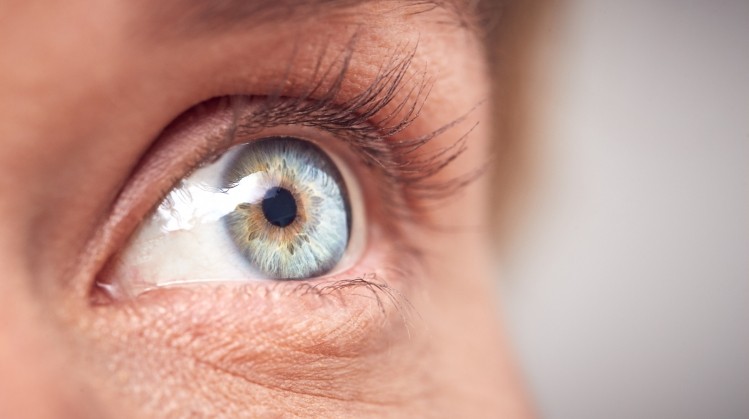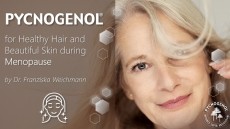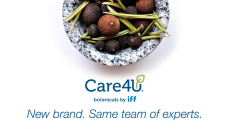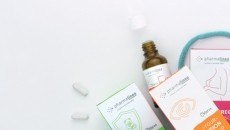Study: selenium intake may prevent cataracts in menopause

The conclusions comes from a newly published study involving a US population from the National Health and Nutrition Examination Survey (NHANES) 2001-2008.
From the trace elements studied, a significant association was only noted in selenium intake and cataract incidence in the lowest intake quintile and the fourth and firth highest intake quintiles. Furthermore after adjusting for age and sex, the association was only established in women aged 65-75.
“Our study points out that maintaining daily dietary selenium intake at higher levels is helpful for cataract prevention, and that increasing daily dietary selenium intake in American women aged 65–74 years may contribute to the prevention of age-related cataract,” the Chinese researchers conclude.
Cataract causes
The formation of cataracts has been established to be one of the leading causes of blindness and visual impairment globally, representing a significant socioeconomic burden and reduction to the quality of life for many.
It has been reported that the accumulation of oxidative damage within the lens plays a significant role in its development, resulting in the aggregation of proteins and apoptosis of the epithelial cells. Further evidence has suggested age, smoking, obesity, and diabetes as established risk factors, with treatment consisting solely of phacoemulsification and lens replacement surgery to improve vision.
However, there are significant risks associated with surgery for cataracts. Therefore, there is an increasing interest in treatment methods to prevent occurrence, with current research highlighting the significance of the difference of trace elements within the lens and plasma of cataract patients.
Previous evidence has been contradicting in terms of the role of elements such as selenium, with some studies highlighting its ability to cause cataracts, whilst a recent study highlighted ow serum levels may represent a risk factor.
Therefore, researchers from China Medical University sought to further investigate the relationship between trace element intake and incidence of cataract, utilising data from the NHANES from the period of 2001 to 2008.
Study
The study included 7,525 participants who underwent ophthalmic examination obtained from NHANES: a programme collating national data from a US population by the National Centre for Health Statistics (NCHS). African Americans subjects were were aged 50 years and older and US adults were 55 and older.
If participants had undergone ophthalmic surgery for cataracts they were defined as having cataracts.
Following multivariate logistic regression analysis to assess the relationship between iron, zinc, copper and selenium and cataract, results suggest participants with cataracts all had significantly lower intakes of trace elements, including iron (13.948 vs. 14.812 mg), zinc (10.269 vs. 11.114 mg), copper (1.151 vs. 1.261 mg), selenium (85.698 vs. 98.267 μg). However, selenium was the only significant variable, which the authors say deserves high attention..
When analysing the different quartiles of selenium intake, the association was observed in the first quintile of one model, and the fourth and firth of all the models. Furthermore, additional subgroup analysis established that after adjusting for age and sex, the association was only established in women aged 65-75.
The authors state: "Our study points out that maintaining daily dietary selenium intake at higher levels is helpful for cataract prevention, and that increasing daily dietary selenium intake in American women aged 65–74 years may contribute to the prevention of age-related cataract. “
They add that taking selenium supplements at the beginning of menopause may help women prevent cataract.
Selenium solution
The report draws attention to a previous study which observed the slowing of increasing lens density and the decrease of turbid density following oral supplementation of selenium in rats, with the scientists explaining, “Selenium supplementation is able to slow down the development of naphthalene induced cataract by slowing down oxidative stress.”
Previous contrasting studies may be explained in the different forms of selenium. “Organic forms of selenium or are able to prevent cataractogenesis by combating oxidative stress. The inorganic form of selenium is in the oxidation state; this might aggravate oxidative stress and thus promote cataract.
“In addition, selenite is also able to promote cataracts through mechanisms such as altered epithelial metabolism, calcium accumulation, calpain induced proteolysis, crystallin precipitation, phase transition, and cytoskeletal loss. Notably, Huang et al. also found that the effect of selenite on the lens changed over time, with a 30% decrease in DNA replication in lens epithelial cells observed at 6–12 h after administration of the selenite into rats, but an 80% increase in DNA replication in lens epithelial cells was observed by 24 h. This suggests that selenite, after a period of action on the lens, has an effect that shifts from damage caused by oxidative stress to repair of the lens epithelium.”
“Combined with our results, we speculate that the reason that selenium only has a protective effect on cataract at lower and higher doses may be the gap in bioavailability between the organic and inorganic forms of selenium and the different maintenance times of high concentrations of selenite within the lens resulting in different effects.”
Whilst present study provides evidence that increased dietary selenium may prevent against the development of cataract, the nature of the study design with a lack of control highlights the need for further RCTs to establish causality.
Source: Frontiers in Nutrition
https://doi.org/10.3389/fnut.2023.1042893
“Selenium intake help prevent age-related cataract formation: Evidence from NHANES 2001–2008”
Baiwei Xu, Zhongwei Liu, Jiangyue Zhao and Ziyan Yu.
Linked resource

POSTbiotics – New Tools in Microbiome Modulation
In this report, Lumina Intelligence analyses the evolving opportunity on POSTbiotics, examining key players, trends, and target consumers in over 20 countries.














